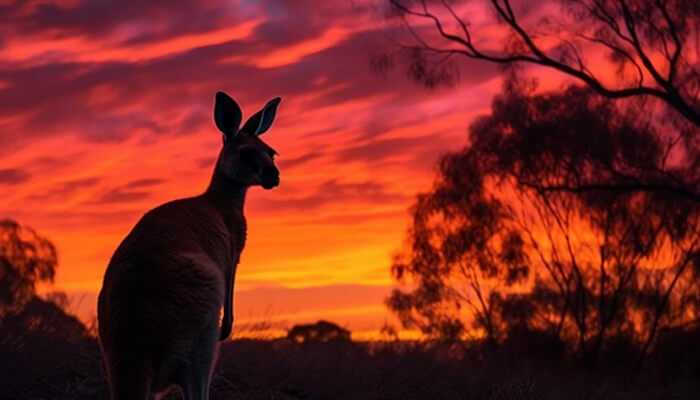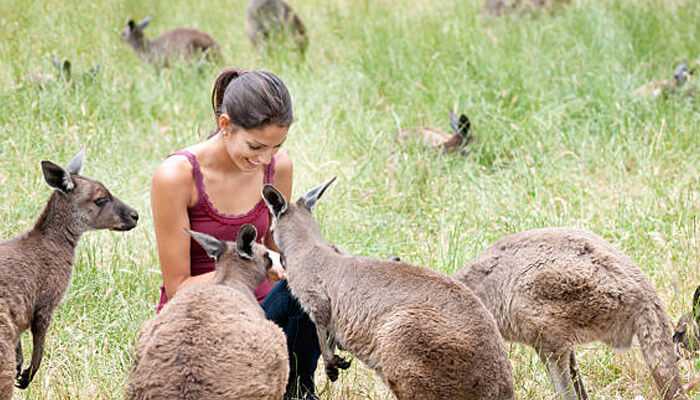In a world that is becoming increasingly populated and urbanized, wilderness has become the ultimate luxury. As natural ecosystems are replaced by man-made structures and settlements, the earth’s pristine wild areas continue to shrink with every passing year. This not only stresses the importance of protecting and preserving the planet’s natural environments but also highlights the joys and wonders of exploring places like Australia’s Wild Side that have remained unscathed by human interference.
If you’re a nature enthusiast or a free-spirited adventurer looking to escape the clutches of modern life and immerse yourself in the great outdoors, Australia’s wide side is one of the destinations where you can still experience the enthralling beauty of unspoiled landscapes. Both a country and a continent, Australia stretches across a whopping 7.7 million square kilometers, being the sixth largest nation in the world, and much of its massive surface is still covered by wildland. So, you might as well pack your bags, get an eSIM Australia to stay connected, and go out and about in the land down under.
According to a study by Pew Environment Group and Nature Conservancy, as much as 40% of the country is occupied by intact wilderness, counting lush woodlands, red-sand deserts, a spectacular coral reef system, and the sprawling outback. Moreover, Australia is one of the five countries comprising 70% of the world’s wilderness, excluding Antarctica.
However, discovering Australia’s wild side can be just as intimidating as it is exciting, so you need to devise a plan and prepare properly before embarking on a quest into the untamed landscape of Oz.
Where to?
Australia’s wild side vast outdoors offer myriad possibilities for extraordinary adventures, each more captivating than the other, so deciding on an itinerary can be difficult since you can’t visit everything in one single trip. To put things into perspective, the Australian outback spans an estimated 5.6 million km2, making it larger than the whole European Union. Besides, the lines between the wilderness and the civilized world are blurry, which makes planning your trip even more challenging. So, if you find yourself overwhelmed by the options, here are some spots you might want to add to your bucket list.
Kangaroo Island
Although it lives up to its name, serving as a natural habitat to approximately 65,000 kangaroos of a unique subspecies of the Western Grey Kangaroo, this is not the only attraction you will find here. Located some 13km off the coast of South Australia, the island is basically a natural zoo inhabited by rare birds, koalas, sea lions, seals, and many other wild animals, so it’s an ideal place for wildlife spotting. The natural scenery is just as spectacular as the fauna, boasting long stretches of rugged coastline, incredible beaches, impressive rock formations, and wind-sculpted sand dunes.
The Kimberly
Western Australia’s northernmost region offers the quintessential Australian outback experience. This huge, remote, and sparsely populated landmass where wilderness still reigns supreme enchants the few people who dare to venture into its territory with an abundance of natural wonders, Australia’s Wild Side reveals itself through dramatic geological structures like the honeycomb-shaped mounds of the Purnululu to stunning gorges, waterfalls, and steep ridges. The Kimberly is also a great place to discover the fascinating Aboriginal culture whose traces can be seen throughout the landscape.
Tasmania
Tasmania is not just the largest Island in Australia but also the only state situated off the coast of mainland Australia, at a distance of about 250km. This remoteness has allowed Tasmania to preserve many of its natural gems intact, having over 40% of its land protected as national park reserves and UNESCO World Heritage areas. This means you enjoy unique off-the-beaten-path experiences, from hiking across rugged peaks and basking in scenic views to discovering the fascinating flora and fauna populating the island’s national parks.
Frankland Islands
Have you ever imagined living on a deserted island, with no soul in sight and nature as your sole companion? Well, if you want to get away from it all, you can get a taste of this idyllic lifestyle by taking a trip to the Frankland Islands. The completely uninhabited islands are part of the famous Great Barrier Reef, the largest coral reef system in the world, so you’ll have plenty of natural wonders to feast your eyes on.
Kakadu National Park
If you want to limit your wildlife explorations to just one single area, we recommend heading to Kakadu National Park as it’s the biggest nature reserve in the country. This Australia’s wild side paradise, which spreads across 20,000 km2, comprises breathtaking natural landscapes, iconic Aussie wildlife, and ancient archaeological sites that provide a fascinating insight into the Aboriginal culture among its many marvels.
Tips for navigating the Australian outback
As you go through the Australian wilderness, it’s easy to get swept away by nature’s beauty and forget about caution or safety. So, here’s a quick reminder of some of the basic rules to remember during your travels.
Safety always comes first, so you should take all the necessary measures to keep yourself and your travel companions safe. This includes being aware of your surroundings, carrying a first aid kit with you, wearing adequate clothing and gear, and sticking to marked routes and trails.
Don’t forget to research the areas you plan to visit and learn about the specifics of each destination and the wildlife you might encounter there. This way, you’ll be able to keep risks and hazards at bay and also make sure you behave responsibly and environmentally friendly, so you don’t disrupt the natural ecosystems.
Taking the path less travelled and venturing into Australia’s wild side areas, far away from any trace of civilization, can be a thrilling and enriching experience that will stay with you forever. So, if wild adventures are what you’re craving, Australia’s great outdoors await.



